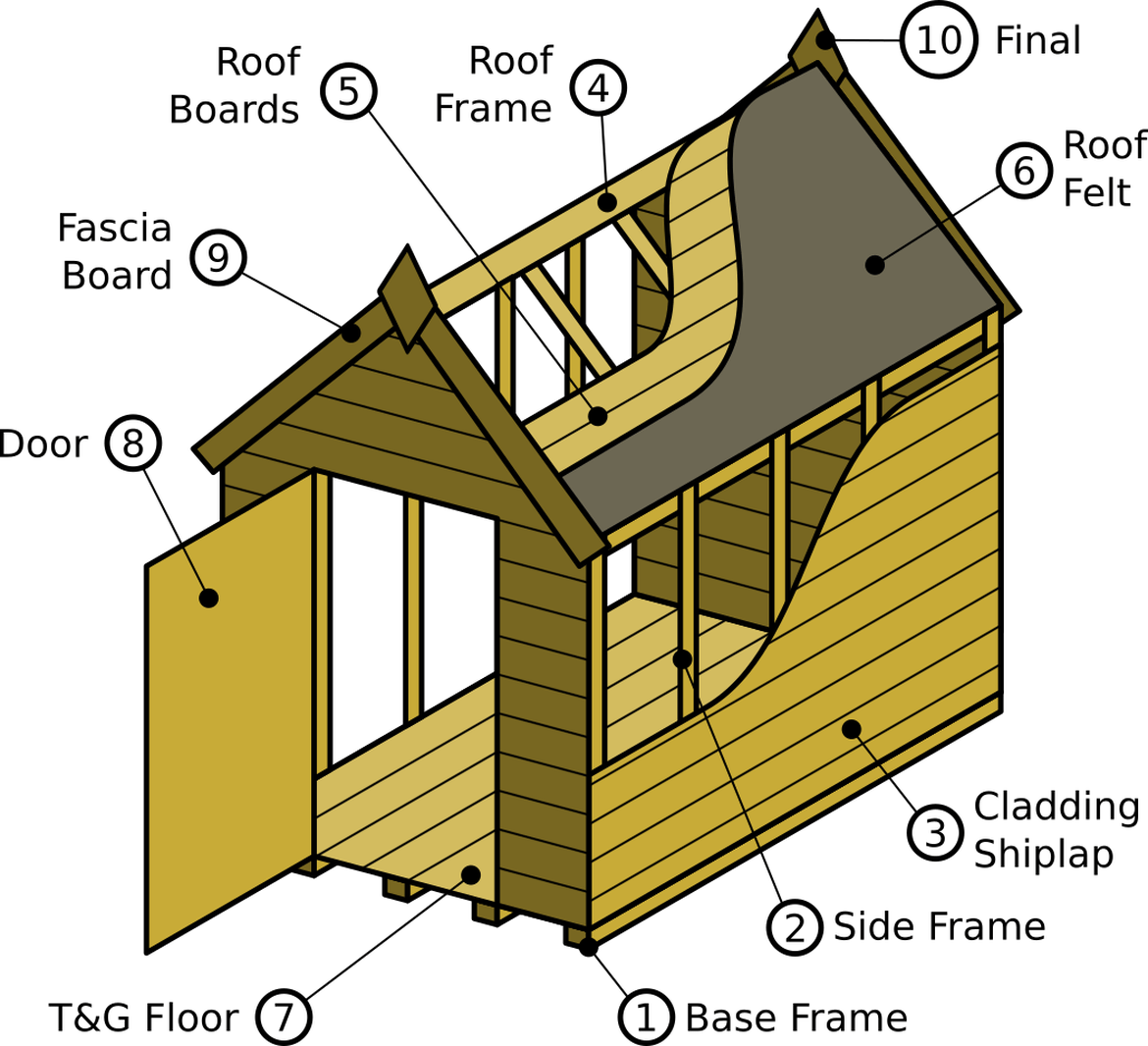Constructing a shed roof, whether for a brand-new structure or as a replacement, requires careful planning and the right selection of materials. The longevity and stability of your shed depend heavily on choosing high-quality components that can withstand the elements. From the structural framework to the final layer of weather protection, understanding the essential materials is crucial for a successful and durable build. The ultimate goal is to ensure that your materials needed to build a shed roof are adequate and correctly installed, preventing leaks and structural damage down the road. Knowing the right materials needed to build a shed roof is the first step towards a successful construction project.
Framing Materials: The Foundation of Your Roof
The roof’s framework is the backbone of its strength and stability. Choosing the right wood is essential.
- Lumber: Pressure-treated lumber is highly recommended for the rafters, joists, and ridge board, especially if the shed is close to the ground. Consider using 2x4s or 2x6s, depending on the shed’s size and local building codes;
- Fasteners: Galvanized nails or screws are a must to prevent rust and corrosion. Use appropriate sizes for connecting the framing members securely.
- Rafter Ties: These metal connectors provide additional strength and prevent the rafters from pulling away from the walls.
Sheathing: Creating a Solid Surface
Sheathing provides a solid surface for the roofing material and adds to the roof’s overall structural integrity.
- Plywood or OSB (Oriented Strand Board): Choose a sheathing material that is at least ½ inch thick. Plywood is generally more resistant to moisture, but OSB is a more cost-effective option.
- Sheathing Clips: These clips connect the edges of the sheathing panels, preventing them from sagging or buckling.
Roofing Materials: Protecting Your Shed from the Elements
The choice of roofing material depends on your budget, aesthetic preferences, and the climate in your area.
Asphalt Shingles: A Popular Choice
Asphalt shingles are a cost-effective and widely available option.
- Asphalt Shingles: Choose a shingle type and color that complements your shed’s design. Be sure to check the wind rating and lifespan of the shingles.
- Underlayment: This layer of protection goes beneath the shingles to provide an extra barrier against moisture. Felt paper or synthetic underlayment are common choices.
- Drip Edge: This metal flashing is installed along the edges of the roof to prevent water from running down the fascia and causing damage.
- Roofing Nails: Use roofing nails specifically designed for asphalt shingles.
Alternative Roofing Options
There are several alternative roofing options to consider.
- Metal Roofing: Metal roofing is durable and long-lasting, but it can be more expensive than asphalt shingles;
- Wood Shingles or Shakes: These provide a rustic look but require more maintenance.
- Rubber Roofing: A durable and eco-friendly option, often made from recycled materials.
Additional Materials
Don’t forget these essential extras.
- Flashing: Used around chimneys, vents, and other roof penetrations to prevent leaks;
- Sealant: Use a high-quality sealant to seal any gaps or cracks.
- Vents: Ridge vents or soffit vents help to ventilate the attic space and prevent moisture buildup.
Essential Tools for the Job
Having the right tools will make the job easier and safer.
- Safety Glasses: Protect your eyes from debris.
- Gloves: Protect your hands from splinters and sharp edges.
- Hammer or Nail Gun: For driving nails.
- Saw: For cutting lumber and sheathing.
- Measuring Tape: For accurate measurements.
- Utility Knife: For cutting underlayment and shingles.
- Ladder: For accessing the roof. Ensure it’s stable and secure.
Choosing the right materials needed to build a shed roof is a critical part of shed construction. Careful consideration of framing, sheathing, and roofing options, along with proper installation, will ensure a long-lasting and weather-resistant structure.

